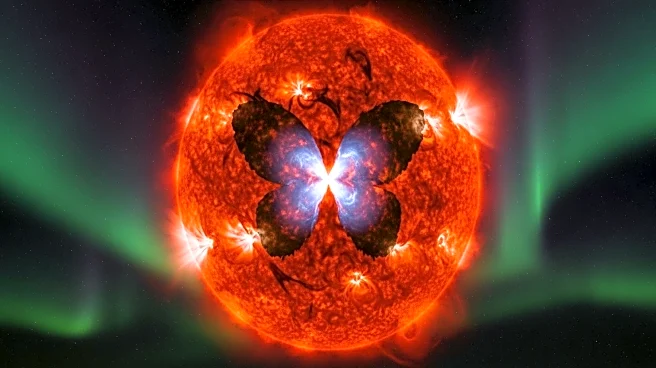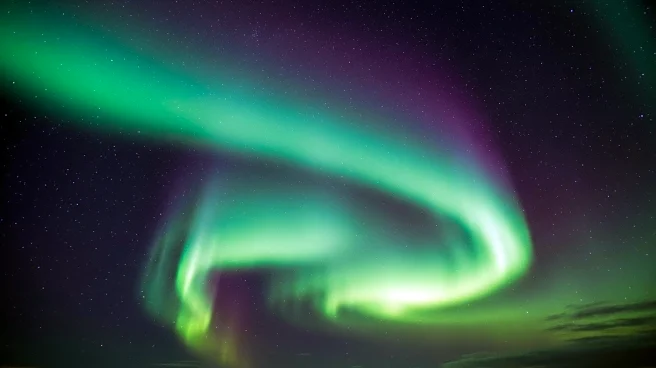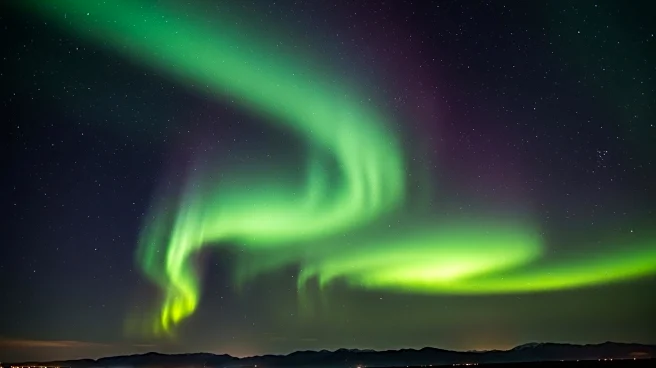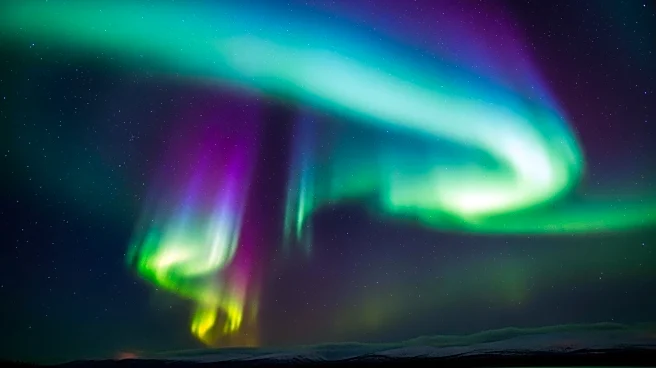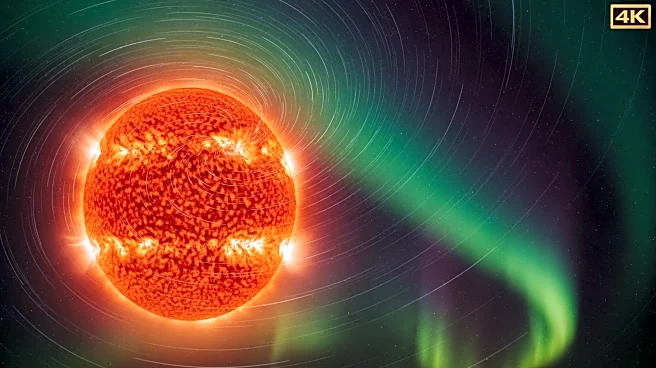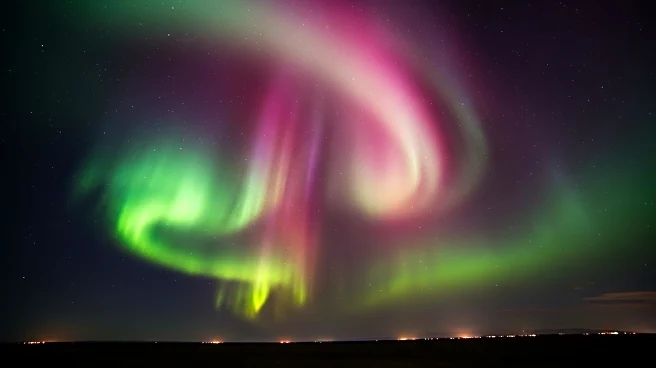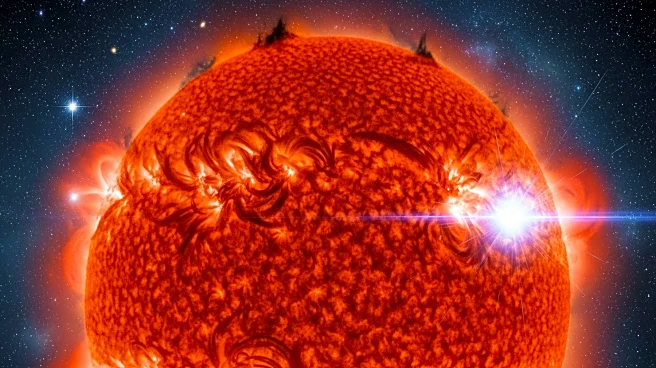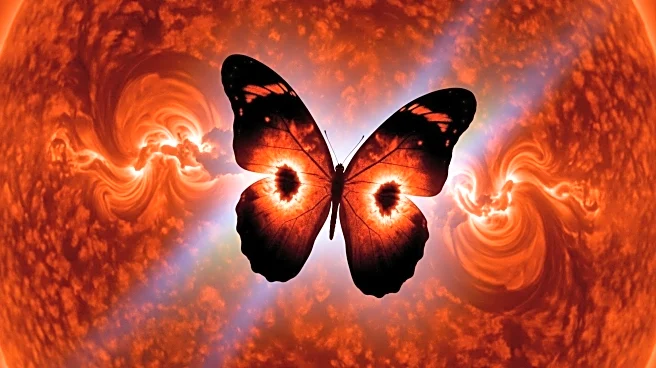What's Happening?
A large coronal hole in the Sun's atmosphere is sending solar wind towards Earth, potentially causing geomagnetic storms and auroras. The solar wind is expected to reach Earth around September 14, 2025, with forecasts predicting G1 to G2 storm levels. These storms could make auroras visible in regions like Canada, Alaska, and Scandinavia. The coronal hole spans 310,000 miles across the Sun, allowing solar particles to escape and interact with Earth's magnetic field. The timing coincides with the autumn equinox, increasing the likelihood of auroras due to the Russell-McPherron Effect.
Why It's Important?
Geomagnetic storms can affect satellite communications, GPS systems, and power grids, particularly at higher latitudes. The potential for auroras offers a visual spectacle for skywatchers, highlighting the dynamic nature of space weather. Understanding these phenomena is crucial for predicting and mitigating their impacts on technology and infrastructure. The event also emphasizes the importance of continued research in space weather forecasting, as solar activity can have significant effects on Earth.
What's Next?
As the solar wind reaches Earth, the intensity of the geomagnetic storms will depend on the alignment of the solar wind's magnetic field with Earth's. Forecasters will continue to monitor the situation, providing updates on the storm's progression and potential impacts. Skywatchers are encouraged to keep an eye on the skies for possible aurora displays, while industries reliant on satellite communications and power grids remain vigilant for any disruptions.
